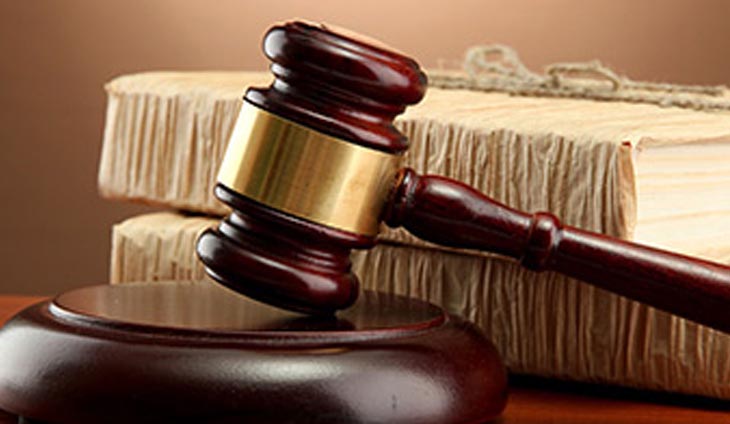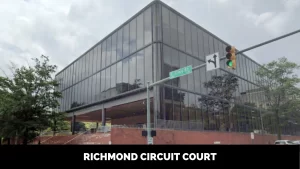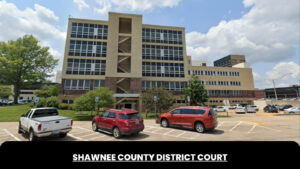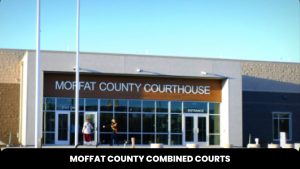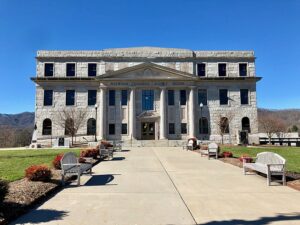What is a Trial Court
A trial court, also known as a court of first instance, is a court that holds trials and hearings to determine facts and render verdicts in legal disputes. Trial courts have original jurisdiction over cases brought before them. Their rulings and decisions may be appealed to and reviewed by higher appellate courts.
Role and Purpose
The role of a trial court is to provide a fair, efficient, and accessible venue for legal claims to be heard and resolved through the trial process. The purpose is to administer justice by determining the facts of a case, applying relevant laws and legal precedents, and issuing a judgment. Key objectives include upholding individual rights, settling disputes, and checking abuses of power.
Key Functions
- Hear testimony and receive evidence
- Make determinations regarding admissibility of evidence
- Instruct the jury on points of law (in jury trials)
- Render verdict and impose sentences in criminal trials
- Provide record of proceedings for appeals processes
- Issue writs, warrants and subpoenas to compel attendance
Trial Court Personnel
The key personnel involved in a trial court Proceedings are:
Judge
The judge is the authority in charge. They oversee trials from start to finish, determining which laws apply and procedures to follow. The judge resolves objections raised by attorneys and instructs the jury. After the trial ends, they decide the final verdict or sentence.
Prosecuting and Defense Attorneys
The prosecutor represents the government’s interests in criminal trials. They present evidence, question witnesses to establish guilt “beyond reasonable doubt”. Defense lawyers work to protect the accused’s rights and prevent wrongful convictions. They build arguments to prove their client’s innocence.
Plaintiff and Defendant
In civil cases, the plaintiff files the lawsuit and asks the court to determine if the defendant is liable for legal wrongs claimed by them. Defendants refute the plaintiff’s accusations.
Witnesses
Witnesses provide testimony of facts related to the case . Expert witnesses have specialized knowledge and help judge and juries better understand evidence.
Court Reporter
Court reporters create word-for-word transcriptions of trials, hearings, depositions etc. Judges rely on them to review proceedings and attorneys use them to prepare appeals.
Bailiff
Bailiffs maintain court safety and decorum. They assist the judge and take custody of the jury during deliberations. In some courts, they swear-in witnesses before testifying.
Jury
The jury reviews evidence presented at trial and delivers a verdict of guilty or not guilty in criminal trials. In civil cases, they determine if one party owes damages to the other and the compensation amount.
The Trial Process
The key stages in a full jury trial are:
Pretrial
Pretrial activities include the formal reading of charges in criminal cases and motions filed by attorneys to exclude/include evidence from trial. Plea bargains may be negotiated.
Jury Selection
Attorneys question and challenge potential jurors to seat an impartial jury. The jury pool is randomly selected from voter registrations and DMV records.
Opening Statements
Opening statements allow both sides to present an outline of the case and substantial evidence that makes their case.
Presentation of Evidence
Witnesses testify and physical exhibits like documents, weapons etc. are shown. Expert witnesses are questioned. Evidence must conform to strict legal rules.
Closing Arguments
Attorneys on both sides sum up key points and evidence in dramatic closing arguments. They emphasize the strengths of their case to the jury.
Jury Deliberation
The jury discusses the case in private to reach a verdict. Members take a preliminary vote, followed by more discussion. When a unanimous decision is made, they inform the judge.
Verdict
The jury’s verdict is read out in court. In criminal cases, it will be either guilty or not guilty on each count. Civil verdicts mention financial damages awarded, if any.
Types of Trial Courts
There are two main types of trial courts:
Courts of General Jurisdiction
These courts are authorized to hear a wide range of civil and criminal cases, with few or no limits on the types of cases they can adjudicate. They typically handle matters with higher stakes or more complexity.
Federal Courts
The federal district courts are the main trial courts in the federal court system. There are 94 federal district courts, with at least one in each U.S. state. These courts have jurisdiction over federal crimes, civil disputes arising under federal law, and diversity cases.
State Courts
States establish their own court systems separate from the federal judiciary. Most states have courts of general jurisdiction variously referred to as Superior Courts, Circuit Courts, District Courts or Supreme Courts. These courts hear everything from small claims to murder cases arising under state laws.
Courts of Limited Jurisdiction
These courts can only hear certain types of cases, usually those below a specified threshold of importance or monetary value. Their jurisdiction may also be restricted to specific subject matters like family law, probate or taxes. Some examples include:
Small Claims Courts
Small claims courts resolve minor civil disputes involving relatively small amounts of money. They provide a quick and informal alternative to bringing claims in courts of general jurisdiction.
Juvenile Courts
These courts handle cases involving minors charged with acts that would be considered criminal offenses in adults. They focus on rehabilitation rather than punishment.
Family Courts
Family courts have authority over legal matters involving families and children, including divorce, child custody, spousal and child support.
Probate Courts
Probate courts oversee proceedings related to wills, trusts, guardianships and estate administration after a person’s death.
Key Differences Between Trial and Appellate Courts
While trial courts investigate facts and evidence firsthand, appellate courts mostly review lower court proceedings for legal and procedural errors. Appellate judges do not hear witness testimonies or examine evidence, but study transcripts and documents from the trial court. They can uphold or overturn trial court verdicts. Other key differences are:
Trial Courts
- Determine factual issues
- Assess credibility of witnesses
- Evaluate quality and sufficiency of evidence
- Render initial verdict
Appellate Courts
- Examine constitutional issues in verdicts
- Review interpretations of law
- Protect legal rights of parties
- Correct harmful errors
- Create binding case law precedent
Features of Trial Courts
Some key features that allow trial courts to carry out their duties include:
Presiding Judges
Trials and hearings involve one or more judges tasked with overseeing proceedings, ruling on objections, instructing jurors, and ultimately rendering verdicts.
Juries
In most common law countries, criminal trials and many civil trials involve juries of citizens who determine factual issues related to the case. Judges determine matters of law.
Rules of Evidence
There are rules governing admission of testimony and documents as evidence in trials. The judge applies these rules to ensure due process.
Court Records and Appeals
Courts produce verbatim records of proceedings. These assist judges in making rulings and facilitate appeals of trial court judgments.
Trials and Hearings
There are a few ways in which matters may be resolved in trial courts:
Bench Trials
In a bench trial, there is no jury. The judge serves as the finder of fact and renders a verdict after both sides present their evidence and arguments.
Jury Trials
Jury trials engage a panel of impartial citizens to hear evidence and decide on factual issues related to the case. Judges determine sentencing in criminal matters after a guilty verdict.
Burden of Proof
The burden of proof determines how convincing the evidence must be to find in favor of one side. In criminal cases, guilt must be proven “beyond a reasonable doubt.” Civil cases use the lower standard of “preponderance of evidence.”
Trial Court Procedures
Here is a quick overview of how trial court cases normally proceed:
Initiation of a Case
The plaintiff or prosecutor files the initial complaint or charging documents with the court to initiate legal action.
Pretrial Activities
Pretrial activities include scheduling conferences, motions hearings to resolve procedural disputes between parties, and discovery processes to exchange relevant information.
Trial or Hearing
This is when the court hears arguments and evidence from both sides before rendering a verdict. Witnesses testify under oath and face cross-examination.
Verdict and Sentencing
In bench trials, the judge issues the verdict. For jury trials, jurors deliberate and return a unanimous verdict. Judges determine sentences in criminal matters.
Post-trial Activities
After a trial court verdict, parties may file motions challenging the outcome or seeking clarification of rulings. Appeals processes take place in higher courts.
Examples from the United States
Here are some notable trial courts in the U.S. federal and state court systems:
U.S. District Courts
The 94 U.S. District Courts are the federal trial courts where both civil and criminal cases arising under federal laws are first heard. These courts do not hold jury trials for most patent lawsuits.
State Court Systems
Most states have a three-tiered judiciary with trial courts hearing cases in the first instance. Terminology varies widely between states.
Superior Courts
California’s trial courts are known as Superior Courts in each of its 58 counties. These courts exercise general jurisdiction over nearly all civil and criminal matters.
Circuit Courts
Florida’s Circuit Courts comprise 20 judicial circuits organized at the county or multi-county level across the state. They primarily handle felony criminal cases and major civil disputes.
Courts of Limited Jurisdiction
Some federal and state courts have more narrowly defined authority. For example:
Tax Courts
The U.S. Tax Court hears disputes regarding federal taxes before final assessments are made by the IRS against taxpayers. Most proceedings do not involve a jury.
Small Claims Courts
Every U.S. state has small claims courts that fast-track resolution of lower-value civil cases involving amounts in controversy below a set threshold. Procedures are simplified and lawyers are rarely involved.
Conclusion
In summary, trial courts have extensive responsibilities conducting fair hearings, settling a wide variety of legal disputes and ensuring justice is served in each case. Outcomes from this first court of record have significant impacts on people and entities involved. Knowledge of the trial process, courts personnel and differences between trial and appellate courts gives citizens a better understanding of this vital branch of the judicial system.
FAQs
What is the difference between a trial court and an appellate court?
Trial courts first hear cases, examine facts and evidence to determine verdicts. Appellate courts review lower court proceedings for legal and procedural errors without new evidence. They can uphold or overturn trial court verdicts.
What happens before a trial begins?
Before trial begins important pretrial events include arraignment, pretrial hearings on procedural issues and plea bargains. Jury selection also occurs before opening statements.
Can you appeal a trial court’s decision?
Yes, trial court verdicts and sentences can be appealed to higher courts. In the appeal, no new evidence is presented; the higher court reviews proceedings for legal and procedural errors.
Who are the key people involved in a trial?
The key people are the judge who oversees it all and attorneys representing opposing sides who battle to win the case through evidence and arguments. Parties in the dispute, witnesses, court staff and the jury also play vital roles.
Why do we have juries?
The right to a trial by an impartial jury is guaranteed for ensuring fairness and representing community standards in judging trials. Juries aim to limit governmental power and bias in legal decisions impacting citizens.
What are the main differences between trial courts and appellate courts?
Trial courts hear cases in the first instance and establish key facts related to disputes. Appellate courts focus on reviewing legal arguments and the trial court record to assess whether procedural rules and substantive laws were correctly applied. They do not redo the trial itself.
What happens if a party loses in a trial court but wants to challenge the outcome?
The losing party can appeal the trial court judgment to a higher court with appellate jurisdiction. This appellate court will examine the trial record and arguments to evaluate if any reversible errors affected substantive rights or deprived the appellant of a fair trial.
Can a trial court decision be enforced right away before any appeals are concluded?
Typically a trial court judgment or verdict can be enforced immediately unless the trial judge or appellant court enters a stay order temporarily halting enforcement. Posting a bond may allow circumvention of a stay.
Do judges or juries decide sentences in criminal cases?
In almost all U.S. criminal cases, judges have the sole authority and discretion to determine sentences within a statutory range after a guilty verdict is rendered by a jury or from a bench trial. Mandatory minimums may constrain judges.
What happens if a jury cannot reach a unanimous verdict in a criminal case?
If a jury deadlocks without unanimity in a criminal case, the judge may declare a mistrial. Prosecutors then have the discretion to retry the defendant by presenting the case to a new jury. Plea bargains often follow hung juries.

